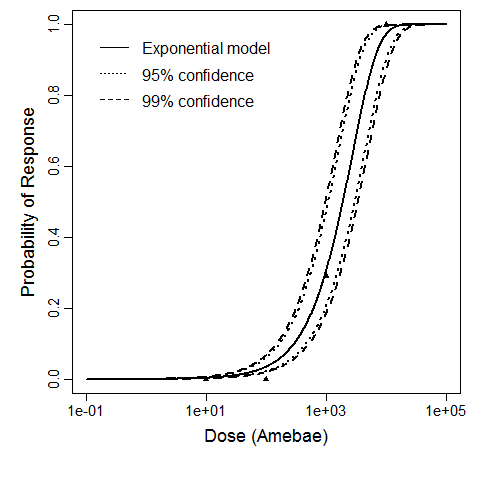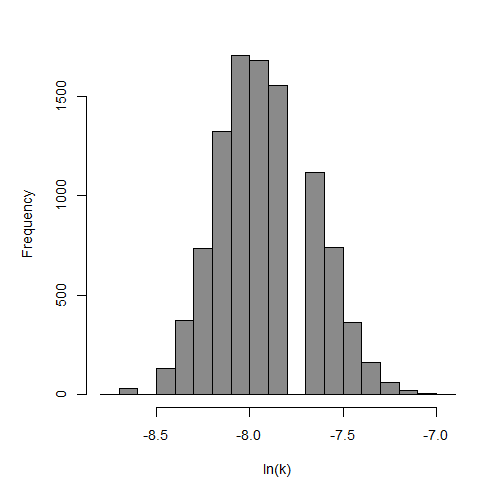| Experiment ID |
Acanth_Cornea2
|
|---|---|
| Agent Strain |
Acanthamoeba Ac118
|
| Contains Preferred Model |
No
|
| Reference |
Badenoch, P. R., Johnson, A. M., Christy, P. E., & Coster, D. J. (1990). Pathogenicity of Acanthamoeba and Corynebacterium in the Rat Cornea. Archives of Ophthalmology, 108, 1. Retrieved from https://jamanetwork.com/journals/jamaophthalmology/article-abstract/638228 |
| Exposure Route |
eyes-cornea
|
| Response |
infection
|
| Host type |
rat
|
|||||||||||||||||||||||||
|---|---|---|---|---|---|---|---|---|---|---|---|---|---|---|---|---|---|---|---|---|---|---|---|---|---|---|
| # of Doses |
4.00
|
|||||||||||||||||||||||||
| Dose Units |
no of trophozoites
|
|||||||||||||||||||||||||
| Μodel |
exponential
|
|||||||||||||||||||||||||
| k |
3.63E-04
|
|||||||||||||||||||||||||
| LD50/ID50 |
1.91E+03
|
|||||||||||||||||||||||||
| Experiment Dataset |
|
Description
Badenoch et al. (1990) studied the combined effect of Acanthamoeba Ac118 (a group III isolate) and the bacterium Corynebacterium xerosis on the corneas of female Portion rats. A constant dose of 106 C. xerosis with increasing doses of Acanthamoeba spp. were injected into incisions in the rat corneas using a microsyringe.
The exponential model provided the best fit to the data.

